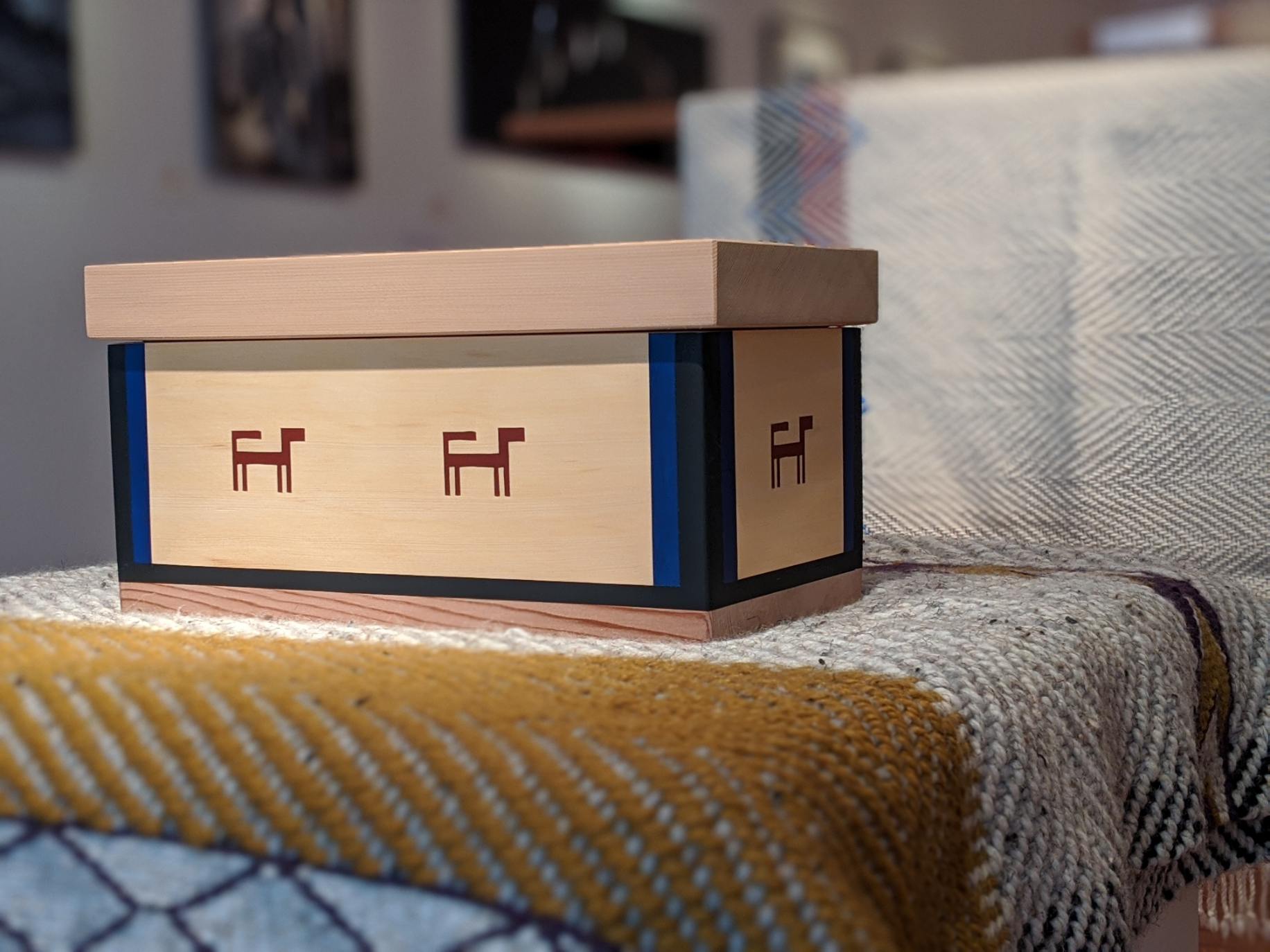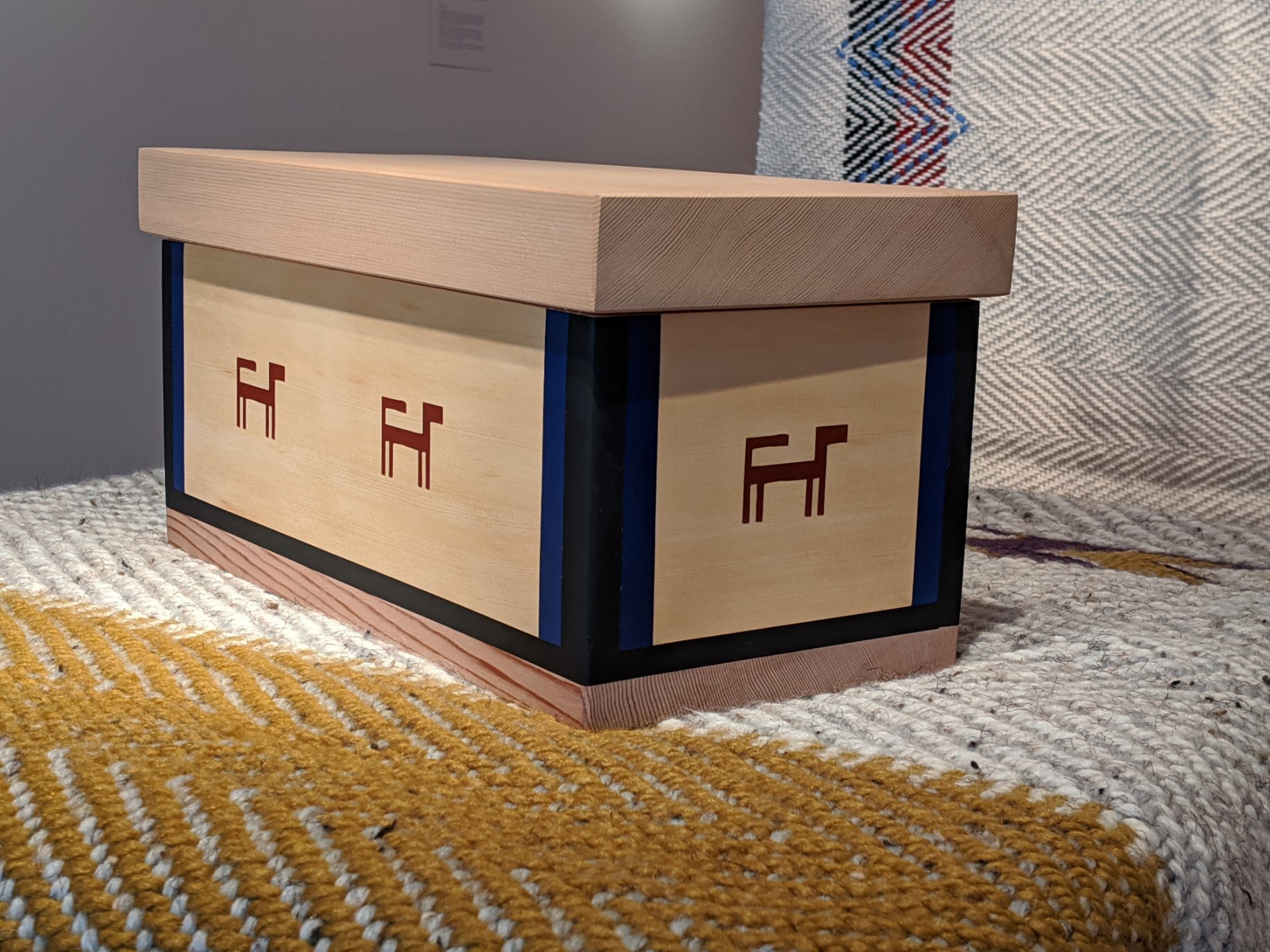Woolly Dog Box
EXHIBITION:
Honoring the Salish SeaThis box is painted with a traditional Skokomish woolly dog pattern, honoring the memory of the woolly dogs that were raised by Skokomish (also known as Twana) weavers for generations.
“Traditional Salish yarns utilized a variety of gathered materials such as duck down, mountain-goat wool, and fireweed cotton, but the primary material was the hair of a distinct dog breed selected for a long, soft, white undercoat. Woolly-dog flocks were a common part of Coast Salish village life and a substantial expense, and the production of woolens was a significant source of portable, storable wealth for Coast Salish families that was typically controlled by women. Introduction of cheap machine-spun yarns in the 1850s resulted in the neglect of dog flocks and loss of the woolly breed, although many Coast Salish women continued to earn their livelihood from weaving and knitting.
George Vancouver likened Coast Salish wool dogs to Pomeranians: a large, foxy-faced German Spitz-type breed with very long plush hair that would have been familiar to English gentlemen. In his oil painting now at the Royal Ontario Museum, Paul Kane depicted a small poodle-like dog sitting patiently beside a Coast Salish loom. The corresponding field sketch (reproduced in Eaton and Urbanek’s Paul Kane’s Great Nor-West, page 103), more resembles a small Shiba or Husky with a foxy face. Lord surmised that the native dogs actually originated in Japan, where there were dogs of similar appearance.
Although many early explorers and settlers recognized the importance of dog-hair weaving to Coast Salish peoples, they recorded little about the dogs themselves, how they were bred, fed, or trained. By the time that anthropologists began raising these questions in the twentieth century, woolly dogs had long disappeared as a distinct, managed breed.
“The wool dog was a distinct breed and was not used for hunting. Wool dogs lived in the house with their owners and were given special care and a different diet from the hunting breed. Owners tried to prevent their interbreeding with hunting dogs. When the ‘wool’ was long it was sheared with a knife” (The Structure of Twana Culture, 95-97).
Dogs were named, highly valued and often buried wrapped in a blanket. Dog remains and dog burials are not uncommon in Coast Salish archaeology. A dog buried with a young woman was unearthed on Lopez Island by a University of Washington field school in 1968. DNA extracted from archaeological dog remains provides physical evidence for Coast Salish villages maintaining locally distinct dog breeds.”
–Coast Salish Woolly Dogs, article at HistoryLink.org


